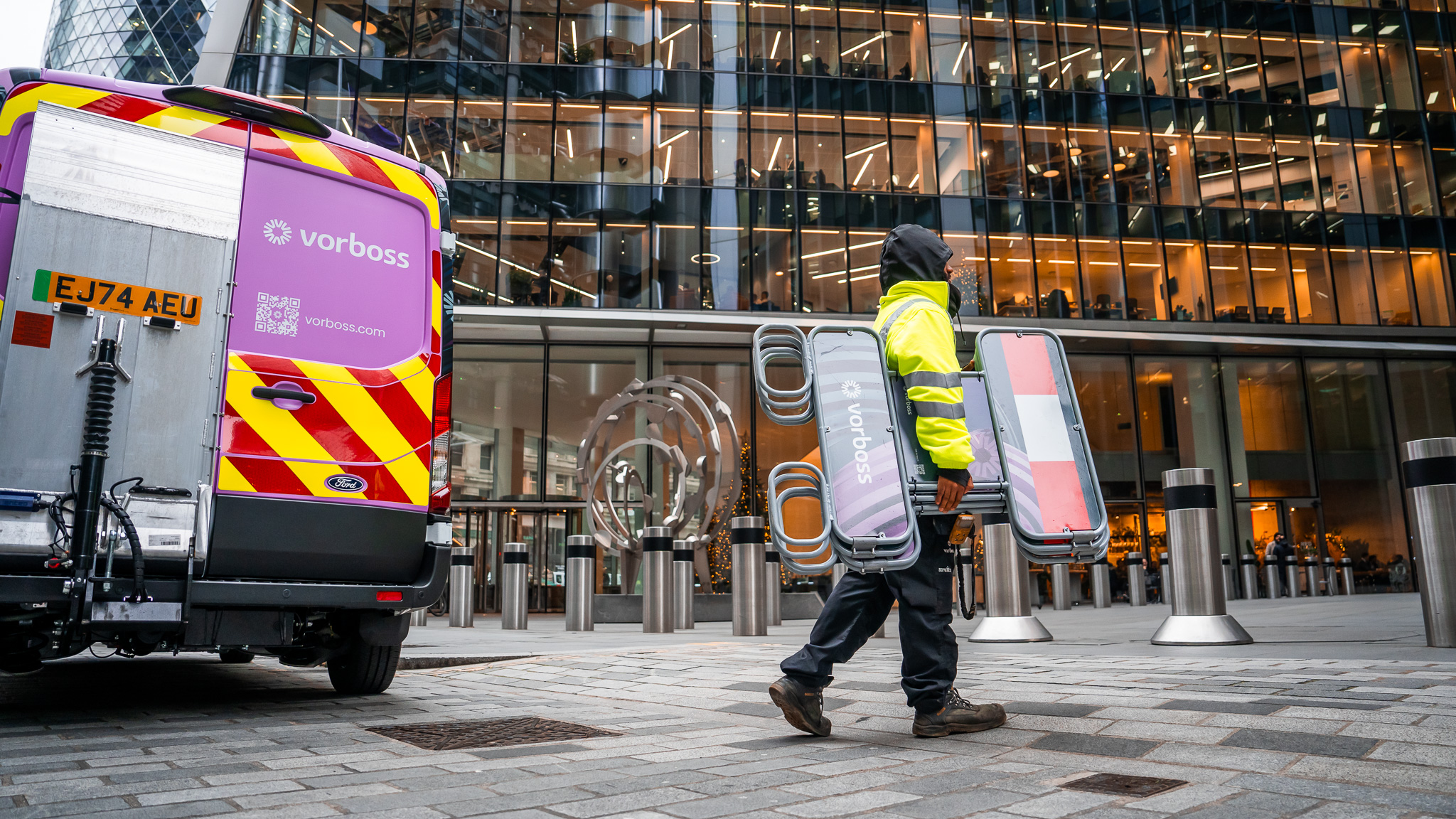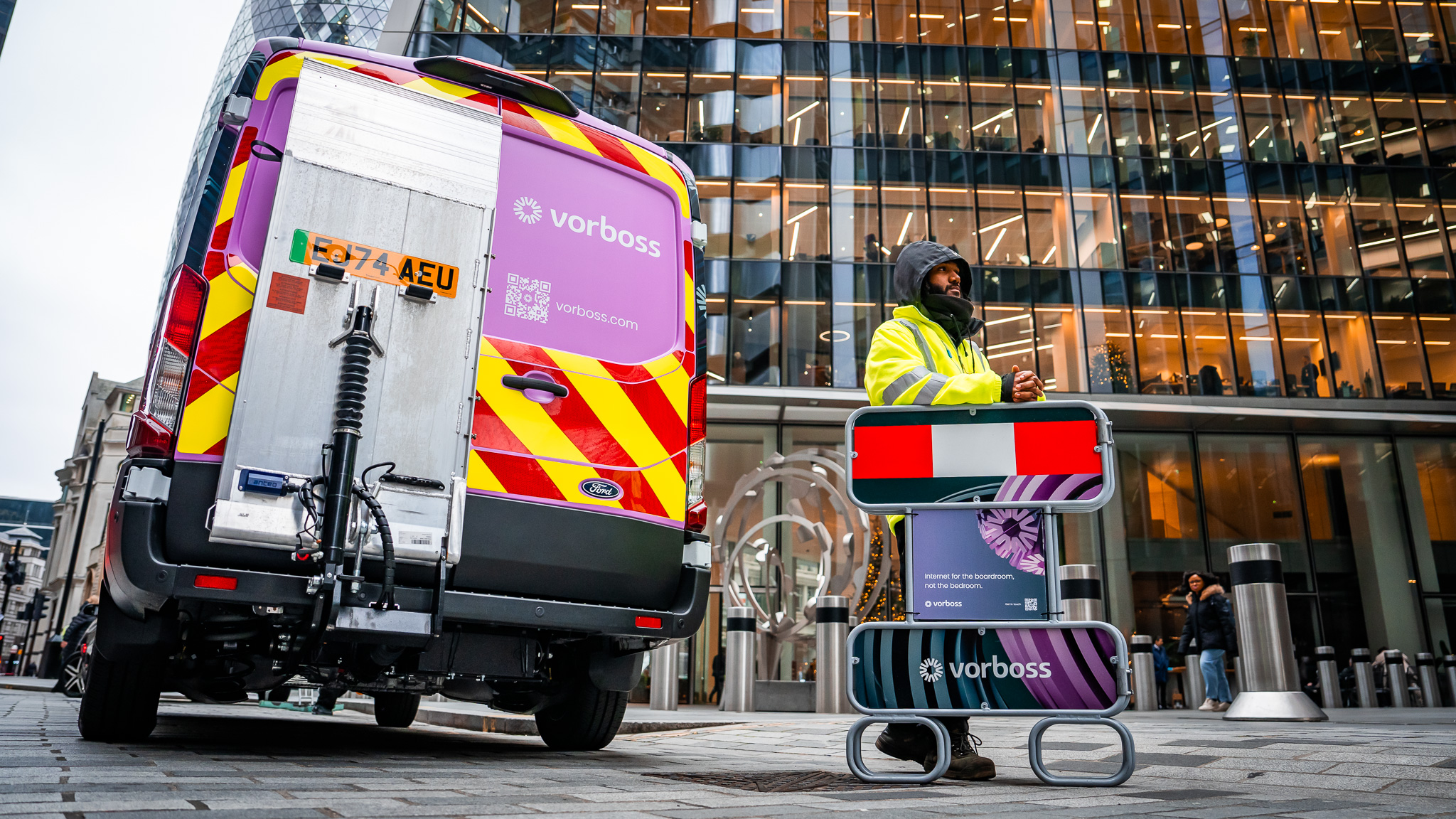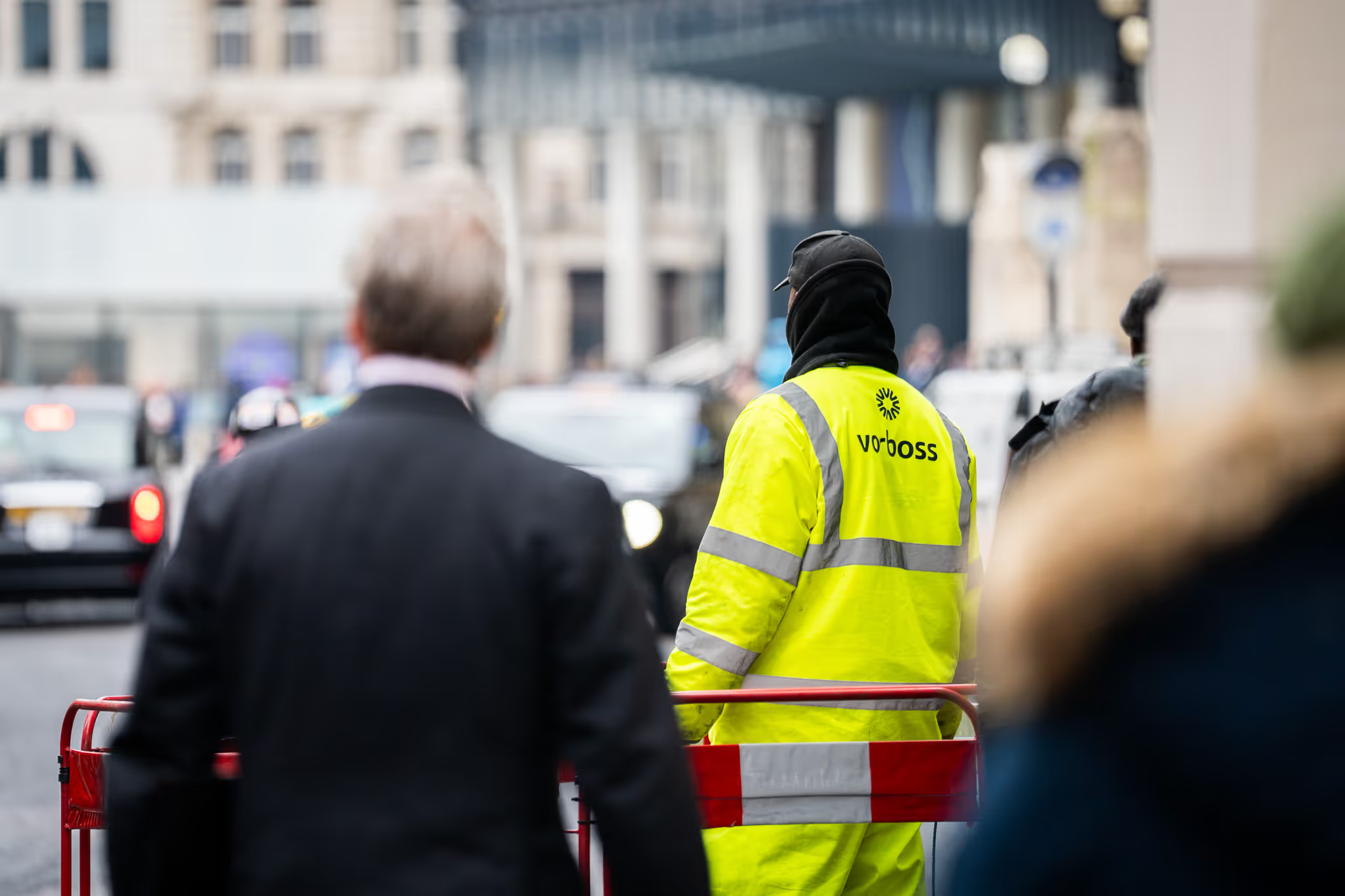100Gbps business internet is here - is your business ready?
November 17, 2022
|
4
min read

Highlights
Vorboss has introduced London's first off-the-shelf 100Gbps internet product, revolutionising connectivity standards for data-intensive businesses. Providing 100Gbps at a market-leading fixed price of £2,250 per month, we disrupt traditional industry pricing, ensuring transparency and direct communication with customers. We own and controls our full-coverage fibre network, facilitating rapid customer connections to 100Gbps and quick upgrades, enhancing London's global competitiveness.
Vorboss, London’s only dedicated enterprise fibre network, has launched the city’s first and only off-the-shelf 100Gbps internet product to power London’s most ambitious businesses, spearheading a new standard for the telecommunications sector.
This industry-first product removes bandwidth constraints for London’s most data-hungry businesses, powering their growth and boosting London’s economy.
Vorboss provides customers with 100Gbps for £2,250 a month, a market-leading price, guaranteed for the lifetime of the contract and with no installation fees. Vorboss owns its network end-to-end and operates entirely in-house, removing the need for brokers, wholesalers and resellers who use confusing pricing structures. This means that, unlike other providers which often have hidden uplifts and charges in their contracts, they can work directly with customers to offer a simple, transparent and competitively priced product.
“No other provider is prepared to publish a price for 100Gbps–if they're even able to provide it. Our mission is to bring transparency to London's businesses. Today we're announcing a fixed price for 100Gbps, already delivered to pilot customers. We're raising the bar for connectivity in London, and removing bandwidth constraints for the most demanding businesses,” said Tim Creswick, Vorboss Founder and CEO.
Unrivalled in scale and quality, Vorboss is investing over £250 million to build London’s only full-coverage fibre network dedicated to businesses. It maintains complete ownership of the over 500 km of fibre optic cables it has installed in London since 2019. The way that Vorboss has designed, built and maintained its network means that they have developed an efficient way to connect new customers to 100Gbps, while also ramping up existing connections to this service. Customers deal directly with the engineers that built the network, and can deliver installations and bandwidth upgrades within days, not months.
“Owning our product end to end means that we install and maintain the connection for our customers, ensuring rapid service, market-leading price points and the quickest fibre upgrades in the industry,” said Creswick. “We are completely committed to working in partnership with our customers by offering a simple, seamless and transparent solution to their connectivity needs.”
Right now, the majority of London businesses are reliant on legacy Openreach infrastructure, which is hampering growth. Over the last decade, the reliance on technology and the shift towards cloud-based infrastructure has increased dependency and bandwidth demands which other fibre network providers cannot support. Superior connectivity will secure London’s position on the global stage while unlocking significant asset value in its office buildings.
100Gbps will allow businesses and office spaces to handle higher traffic volume, greater upload and download speeds, and a smoother integration of AI across industries. Enhanced connectivity makes any building a more attractive place for companies to work, giving landlords a strong case for leasing. Due to its exceptional product offering and ability to connect buildings, rather than just tenants, Vorboss helped 22 Bishopsgate to secure WiredScore Platinum accreditation, the highest possible stamp of approval.
"Understanding the needs of London’s businesses means having an awareness that one size will not fit all. Our entry product of 10Gbps is the minimum sensible offering for any business. While the rest of the industry is only now catching up with that need, we have been looking ahead and building capacity to support the most data-intensive customers. We are the first to market with 100Gbps. Our ambitions mirror that of the businesses we support,” said Humza Bobat, Head of Network Infrastructure.
Tell us about yourself so we can serve you best.
Got a question?
More articles

For many landlords and building managers, the word “wayleave” feels like the responsible route whenever a fibre circuit is being installed on their property. It sounds formal and safe – a neat legal box to tick.
In many cases, however, a wayleave adds unnecessary complexity and delays, frustrates tenants, and can expose landlords to long-term legal risks.
At Vorboss, we’ve connected thousands of office spaces across London without a wayleave, keeping landlords in full control and getting tenants online faster.

What is a wayleave?
A wayleave is a written agreement between a landowner and a telecoms operator. It gives the operator permission to install and keep equipment on private property.
What many people don’t realise is that signing a wayleave also activates “Code rights” under the Electronic Communications Code. These rights go beyond simple permission, they give the operator legal powers to stay on the property indefinitely, access it when needed, and even refuse removal of their equipment in certain situations.
For a typical connection into a commercial building in London, a wayleave can make the fibre installation process slower, more expensive, and limit the landlord’s flexibility long term.
Why a wayleave isn’t required for standard in-building fibre connections
For a standard in-building fibre connection serving a tenant, a wayleave isn’t a legal requirement. Important protections, like building access, fire safety, repairing any damage, and removing equipment, are already covered by the tenant’s lease and usual building rules.
If no wayleave is signed, no Code rights are triggered, meaning the landlord retains full control and the installation exists under a simple, fully revocable licence.
In practice, this gives landlords far more protection and flexibility:
- No legal lock-in – the telecoms operator has no long-term rights to stay or refuse removal.
- Landlords keep full control – equipment can be moved or removed when the building changes.
- Faster fibre installation – no time lost in drafting contracts or solicitor reviews.
- Happier tenants – connections go live quicker; tenants get to move in faster.
By contrast, signing a wayleave and granting Code rights introduces a complex and expensive legal process for any fibre removal or relocation. This can take at least 18 months, plus potential court or tribunal proceedings, making it slower, and far less flexible for the landlord.

Public services across central London are evolving, and the City of London Corporation is leading the way.
Whether you work, live or study in the Square Mile, you’ll soon feel the difference that faster, more dependable connectivity brings.

What is the Future Network Programme?
The City of London Corporation is rolling out the Future Network Programme, a major project to modernise its entire digital infrastructure and bring everything under one unified network.
From offices and schools to iconic green spaces like Hampstead Heath, cultural destinations like the Barbican, and historic markets such as Leadenhall and Old Spitalfields, this upgrade will mean more reliable connectivity across the City’s buildings and public spaces.
It also extends to essential services, including critical sites run by the City of London Police. This enhanced connectivity will support everything from secure communication systems to faster, more resilient networks for emergency operations.
Leading this transformation is Roc Technologies, supported by Juniper Networks and Palo Alto Networks; all powered by the Vorboss fibre network. Together, we’re bringing the City onto a modern digital foundation that’s ready to support its future.
Who the Future Network Programme benefits and how?
The programme is designed for everyone who depends on public services in the Square Mile:
- Students in City-run schools will have fast, reliable connectivity to fully access digital learning tools.
- Public-sector teams will experience smoother hybrid working, better access to online platforms, and more efficient collaboration across locations.
- Residents and visitors will see improvements in public Wi-Fi, digital services, and online access in libraries, community hubs, and other shared spaces.
- The City of London Police will gain a more secure, faster and resilient network that enhances CCTV reliability and enables more effective frontline operations.

.avif)

.avif)

